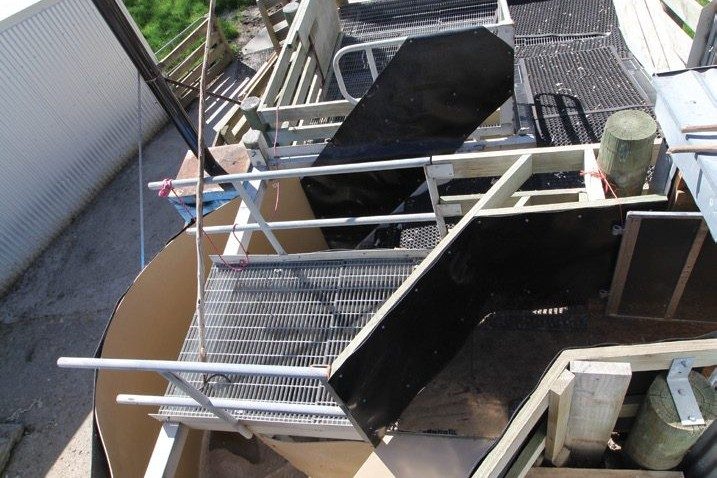Sheep taking the plunge
It's not quite a swiss hot tub experience but it’s getting close.

It’s not quite a swiss hot tub experience but it’s getting close.
All 8000 merinos at Mount Gladstone Station, Awatere Valley, get a warm plunge dip off-shears.
Jeremy and Hayley Pitts decided to build a custom-made plunge dip after lice numbers were increasing. They were not effectively controlled through pour-on, Jeremy says, particularly as it was being applied to sheep shorn with a cover comb. They decided to return to a plunge dip method, then retrofitted a heating system for the dip water. This helps sheep cope with water immersion in a high-country spring environment.
The finished system is a custom-built plunge dip.
“I don’t know of any other heated dips,” Jeremy says.
Four years ago, the Pitts noticed lice numbers were building up in the flock.
“We had several bales of cop at pre-lamb shearing.”
They shifted to a plunge dip with a combination of insect growth regulator (long-term control) and a knock-down product, and they’ve seen a complete turnaround.
“The first year of plunge dipping eradicated the lice. We dipped the following year to make sure.”
With the dip constructed, it is comforting to know it’s there if we need it, he says.
Construction material cost was kept to about $5000. Jeremy bought two 25,000 litre tanks and immediately took to one with the grinder, cutting it in half to create the bath. The top, with a sloping dome and centre hole, was ideal as a drain for sheep as they walked out. The second tank is the reserve to fill the dip.
As sheep walk directly from the shed to the dip, they have clean feet and the resulting ‘drip’ can be captured and pumped back into the plunge. The operator stands in a crow’s nest in the centre to do the plunging. Jeremy got hold of a post-earthquake winery catwalk that was damaged. This forms the grill for the drain and the crow’s nest. The major advantage of having an above-ground dip is that it can be drained when not in use, he says.
A concrete block fireplace and chimney were constructed alongside the dip. Inside the chimney is an old hot-water cylinder which Jeremy says acts in a similar way to a thermette. Cold water flows in the bottom and hot water overflows out the top, creating a natural circulation of warm water.
“We light the fire three days before shearing and start heating the dip, which we cover to keep warm.”
The temperature peaks at 26 degrees. After standing to drip off, the sheep move to the foot bath. This is lined with a silage cover and diesel blowers pump in warm air to help dry the sheep.
Feeding the fire does take some time, but Jeremy says it’s worth it for sheep health. Sheep are shorn, lice-free, and warm and dry when they head off to their blocks.




